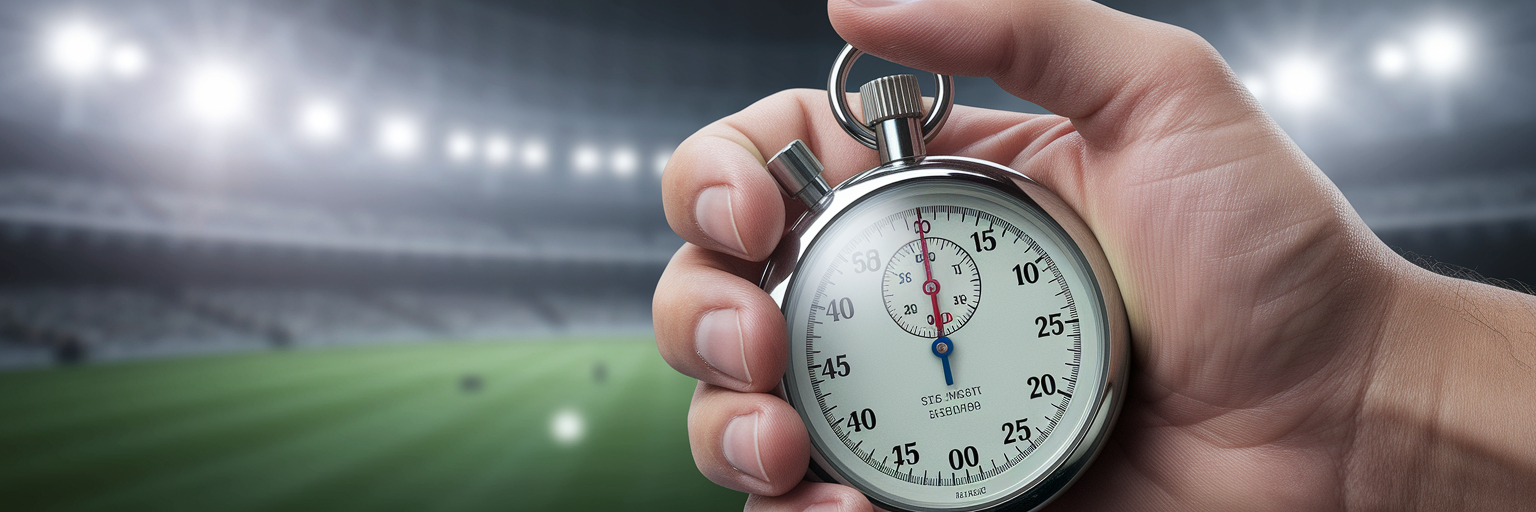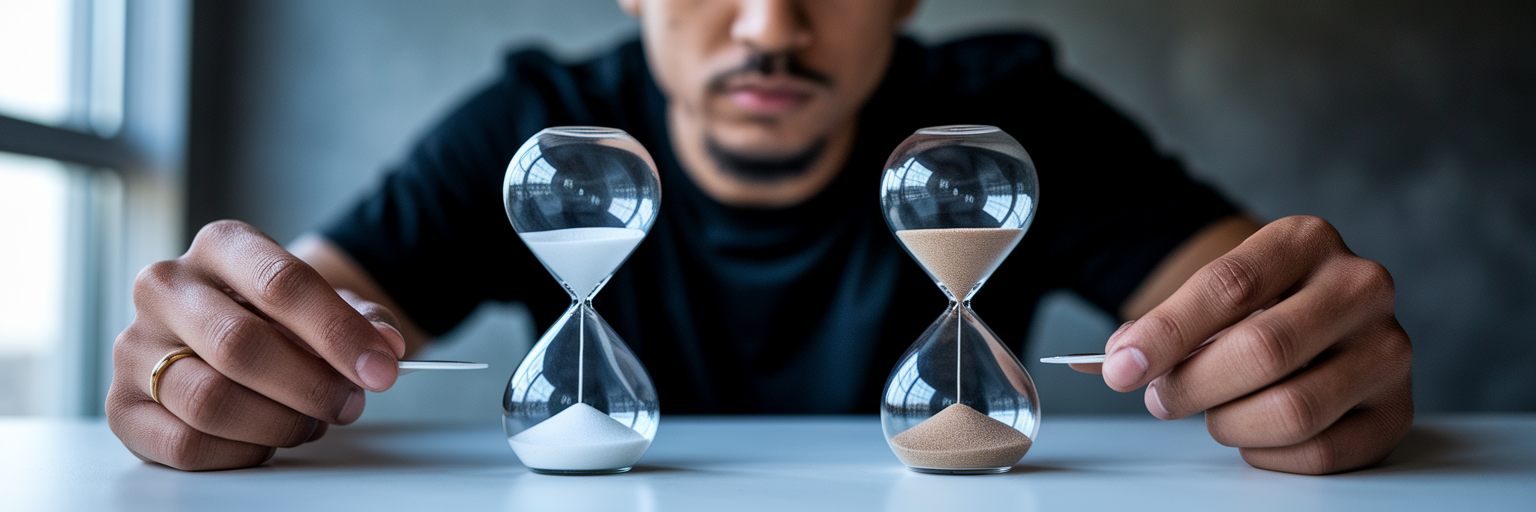Timers Versus Stopwatches Which Tool Best Suits Your Tasks
« Back to all blog postsDetermine whether a timer or a stopwatch is the ideal choice for your daily activities, workouts, and productivity goals. Make informed decisions for better time use.

A timer is a device designed to count down from a predetermined duration. Its primary role is to signal the end of a specific time block.
A stopwatch is designed to count up, to determine how long an event takes.
Defining Timers and Stopwatches
While a timer counts down, a stopwatch operates differently. It is a tool engineered to measure the amount of time that elapses from its activation until it is manually stopped. The primary stopwatch uses involve recording the precise duration of an event or activity as it unfolds. You might use one to see how long a specific task takes you, from start to finish.
The core operational distinction between these two instruments is fundamental: timers count down towards zero from a preset time, while stopwatches count up from zero, measuring accumulated time. This seemingly simple difference in their direction of time tracking dictates their suitability for various task timing tools. One is about managing a known quantity of time, the other about discovering an unknown quantity.
To summarize their key functions, timers are indispensable for managing set durations, effectively acting as a boundary for your activities. In contrast, stopwatches are built for measuring elapsed time, providing data on how long something has actually taken. Understanding this distinction is the first step in choosing the right tool for your needs.
Ideal Applications for Timers
Building on their function of counting down, timers are exceptionally useful in specific scenarios where managing predefined time blocks is essential. They bring structure and discipline to various activities, ensuring that time is used intentionally.
Structuring Time-Bound Activities
Timers excel when tasks require adherence to a specific timeframe. Consider the Pomodoro Technique, where work is broken into focused intervals, typically 25 minutes, separated by short breaks. This method relies entirely on a timer to signal transitions. Similarly, in cooking, a timer ensures your dish isn’t over or undercooked. For presentations, setting a timer helps you stay within your allotted speaking time, creating a clear boundary for your content delivery. These productivity timers help allocate attention effectively.
Enhancing Productivity and Focus
The psychological impact of a countdown can be quite powerful. A ticking timer often creates a beneficial sense of urgency, which can be a great motivator to combat procrastination and maintain concentration. Knowing you have a limited window to complete a task encourages you to stay focused and work efficiently. This structured approach helps in achieving goals within set limits, preventing tasks from dragging on indefinitely. According to productivity experts, individuals who allocate specific time blocks for tasks using timers often report greater control over their workload and a reduction in stress.
Managing Workout Intervals
In fitness, timers are crucial, particularly for interval training. Workouts like Tabata, which involves short bursts of intense exercise followed by brief rest periods, or circuit training, which cycles through various exercises with timed stations, depend on precise timing. A timer ensures that work and rest periods are strictly managed, which is essential for the effectiveness of these training methods. It removes the guesswork and allows you to concentrate fully on your performance.
Here are some key benefits of using timers:
- Creating structure for tasks with fixed deadlines or desired durations.
- Boosting concentration through a perceived, manageable sense of urgency.
- Systematically managing work and rest periods in exercise or study.
- Preventing over-commitment to a single activity, ensuring balanced effort.
Ultimately, timers are best suited for tasks with predefined durations, instilling a framework that supports structure and focus, helping you manage your time rather than just observe it passing.
When Stopwatches Shine for Measurement

In contrast to timers that manage set durations, stopwatches are the superior choice when the objective is to measure how long an event or activity takes. Their strength lies in capturing elapsed time, providing valuable data for various purposes. The diverse stopwatch uses make them indispensable in many fields.
Tracking Performance and Speed
A stopwatch is indispensable for activities where measuring the total time taken is the primary goal. Think of athletic events like races or speed drills. In these contexts, the elapsed time is the key metric for success or improvement. Coaches and athletes rely on stopwatches to gauge speed, endurance, and overall performance accurately. It’s not about limiting time, but precisely recording it.
Benchmarking and Improvement
Stopwatches facilitate the establishment of baseline performance metrics. By repeatedly timing a task, whether it’s assembling a product, solving a puzzle, or completing a lap, individuals and teams can track progress over time. This data is crucial for identifying areas where efficiency can be improved or where more training might be needed. It’s the difference between feeling like you’re getting faster and knowing you are.
Understanding Actual Task Duration
Often, we underestimate or overestimate how long certain activities take. A stopwatch helps uncover the actual duration of tasks, especially those that are new or performed infrequently. This information is invaluable for accurate time audits, better future planning, and realistic scheduling. If you’re wondering where your day goes, timing your routine tasks can be an eye opening experience.
Key scenarios where stopwatches prove advantageous include:
- Measuring speed in competitive sports or practice drills.
- Establishing benchmarks for skill development and tracking improvement.
- Accurately determining the time required for unfamiliar or complex tasks.
- Collecting precise time data for analysis, records, or scientific experiments.
In essence, stopwatches are the go to tool for measuring elapsed time. They are ideal for performance tracking, understanding actual task durations, and gathering data to inform future actions.
Timers Versus Stopwatches: Practical Scenarios
The choice between a timer and a stopwatch often becomes clearer when we look at everyday situations. The timer vs stopwatch dilemma is resolved by understanding your primary objective: are you trying to control a duration or measure one? Let’s explore a few common scenarios.
For productivity techniques, a timer is perfect for methods like the Pomodoro Technique, where you set it for 25 minute focused work sessions. Conversely, a stopwatch would be used to track the total cumulative hours spent on a large project over several days or weeks. Data from tracking actual task durations, as noted by productivity analysts, can reveal inefficiencies and help refine future planning for better personal productivity.
In fitness regimens, a timer is essential for interval training, such as setting it for 30 seconds of high intensity work followed by 30 seconds of rest. A stopwatch, however, would be used to record the total time it takes to complete a 5k run or an entire workout session from start to finish.
When it comes to kitchen activities, you’d use a timer to ensure your cookies bake for exactly 12 minutes. A stopwatch, on the other hand, could measure how long it takes you to prepare a new, complex recipe from chopping the first vegetable to plating the final dish, helping you plan better next time.
For study and learning, a timer can help maintain focus by setting it for 45 minute study blocks. A stopwatch could track the total hours you’ve dedicated to studying a particular subject over a semester, giving you a clear picture of your overall effort.
| Activity Type | Timer Usage (Managing Time) | Stopwatch Usage (Measuring Time) | Primary Goal |
|---|---|---|---|
| Focused Work (e.g., Pomodoro) | Set 25-minute work intervals | Measure total time spent on a large project over days | Manage attention / Track overall effort |
| Exercise | Time HIIT workout intervals (e.g., 45s work, 15s rest) | Record time for a 5km run | Structure workout / Gauge performance |
| Cooking/Baking | Ensure cookies bake for exactly 12 minutes | Measure how long it takes to prepare a new recipe from start to finish | Ensure precision / Understand effort for future planning |
| Presentations/Speeches | Keep speech within a 15-minute allocated slot | Measure actual speaking time during a practice run to refine delivery | Adhere to limits / Optimize pacing |
The table above illustrates how the choice depends on whether your goal is to manage a set duration or measure an unknown one. Each tool serves a distinct purpose, helping you interact with time differently.
Making the Right Choice for Your Task

Ultimately, selecting between a timer and a stopwatch hinges on a simple, core question: Do I need to control and limit a specific block of time, or do I need to measure how long a task actually takes? Answering this will almost always point you to the correct tool.
It’s also worth noting that these tools are not mutually exclusive. Timers and stopwatches can be used in a complementary fashion. For instance, you might use a timer for focused work sessions throughout the day, and a stopwatch to track the total time invested in a project over a week. This combination offers both micro-level discipline and macro-level insight. Modern digital time management solutions often integrate both timer and stopwatch features, making it easy to switch between tools as needed, providing great convenience.
Your decision should always align with your specific goals for the task at hand. Are you aiming for discipline, efficiency within a set period, performance measurement, or simply understanding your current time usage? The best time management tool is the one that directly supports that objective.
Consider these key decision criteria:
- Objective: Are you managing a set duration (timer) or measuring an unknown one (stopwatch)?
- Task Nature: Does the task require strict adherence to time limits (timer) or performance tracking and data collection (stopwatch)?
- Desired Outcome: Are you aiming for focused effort within a predefined timeframe (timer) or gathering data on actual time spent for analysis (stopwatch)?
Choosing the right instrument in the timer vs stopwatch debate is fundamental to effective time management. By understanding their distinct functions and aligning them with your task requirements, you can leverage these simple yet powerful task timing tools to achieve your specific objectives more effectively.